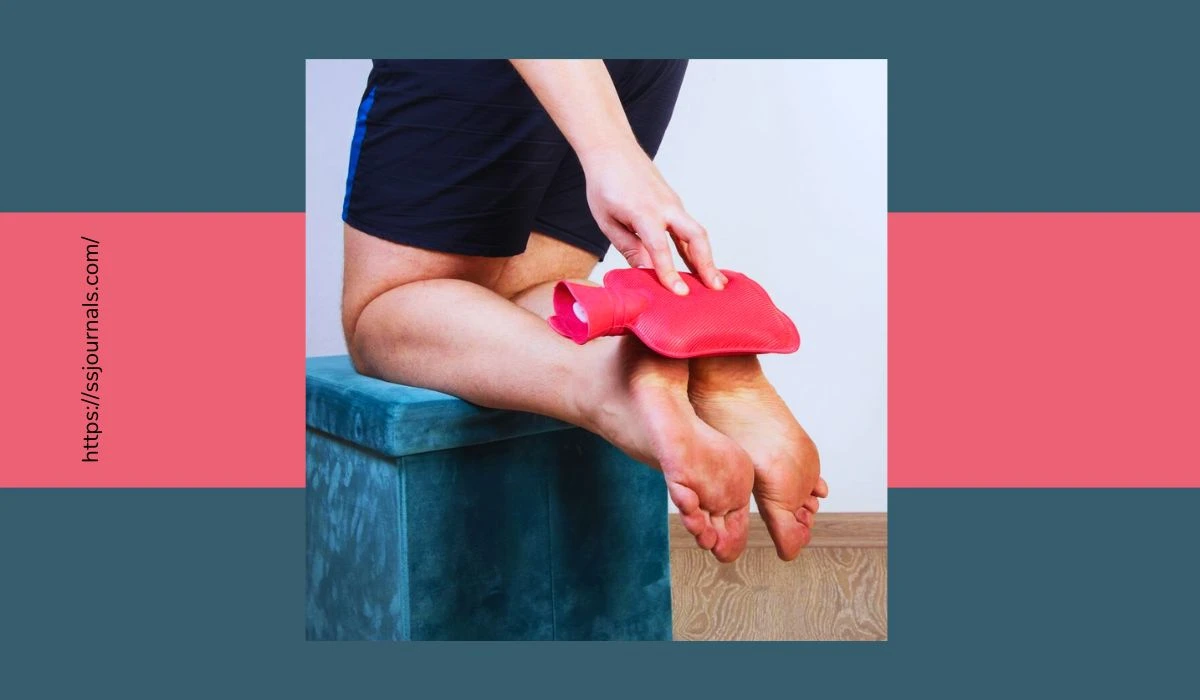Nerve pain, also known as neuropathic pain, refers to pain caused by damage or dysfunction in the nervous system. It is estimated that around 8% of adults suffer from some form of neuropathic pain. The pain is often described as burning, shooting, stabbing, or tingling. Nerve pain can significantly impact one’s quality of life and ability to function.
While there are medications that can help manage nerve pain, many people look for additional ways to find relief, like through heat therapy. In this article, we will look at the symptoms and causes of nerve pain, discuss how heat can help provide pain relief, tips for using heat therapy, and answer some frequently asked questions.
Understanding Nerve Pain: Symptoms & Causes

Nerve pain develops when nerves are injured or diseases cause damage to the nervous system. Some common causes include:
- Diabetes – High blood sugar levels associated with diabetes can injure nerves.
- Shingles – The herpes zoster virus that causes chickenpox can reactivate later as shingles and affect nerves.
- Sciatica – Compression or irritation of the sciatic nerve causes pain in the lower back and legs.
- Chemotherapy – Some chemotherapy drugs are toxic to nerves.
- Trauma/Injury – Car accidents, sports injuries, falls and other trauma can directly damage nerves.
- Autoimmune disorders – Diseases like multiple sclerosis and Guillain-Barre syndrome can damage nerve coverings.
Nerve pain symptoms can differ depending on the location and type of nerves affected. Common symptoms include:
- Burning, stabbing, or shooting pain
- Tingling or numbness
- Heightened sensitivity to touch
- Muscle weakness or paralysis
- Difficulty sleeping due to pain
- Loss of coordination or balance
- Sensitivity to cold temperatures
The pain is often described as constant and ranges from mild to excruciating in severity. It can be challenging to treat because medications like NSAIDs or opioids often provide limited relief for nerve pain.
How Does Heat Help Nerve Pain?
Heat therapy, also known as thermotherapy, is considered an effective complementary treatment for helping relieve nerve pain. Heat works in several ways:
- Increases blood flow – Applying heat dilates blood vessels, improving circulation to the affected area. Better blood flow helps reduce inflammation, deliver oxygen and nutrients, and remove waste products that contribute to pain and neuropathy.
- Relaxes muscles – Warmth helps relax tense, tight muscles that may be putting pressure on nerves. Gentle heat can relieve muscle spasms and release trigger points.
- Distraction – The sensation of heat can partially distract the brain from processing pain signals from nerves. Heat activates temperature-regulating nerves, helping override pain signaling.
- Provides comfort – The soothing, comforting warmth of heat can help improve mood and reduce anxiety associated with chronic nerve pain. Deep heat feels comforting and relaxing.
While heat may not eliminate nerve pain entirely, it can provide significant temporary relief and improve mobility when applied appropriately. It is most effective when combined with other treatments like medication, physical therapy, massage, and nerve stimulation therapy.
Tips For Using Heat Therapy For Nerve Pain
Heat therapy can be applied in various ways. Here are some tips for using heat effectively to ease nerve pain:
- Use moist heat – Moist heat from warm towels, hot packs or a heating pad set on low penetrates deeper than dry heat.
- Target specific areas – Focus heat on the location where nerve pain originates or radiates. For sciatica, apply to lower back and legs.
- Use proper duration – Apply moist heat for 15-20 minutes at a time, 2-3 times daily to get the best pain-relieving benefits.
- Test temperature – Heat should feel very warm but not scorching hot to avoid burns. Test patches first.
- Rotate areas – Shift heating pads or hot packs to different sore areas to avoid overheating one spot.
- Hydrate – Drink extra fluids before and after heat therapy to avoid dehydration.
- Allow time between applications – Let skin cool for 45-60 minutes between heat treatments to avoid irritation.
- Check skin – Monitor for redness or skin damage, especially with loss of sensation from neuropathy.
- Avoid joints – Don’t apply direct heat over joints or swollen extremities at risk for injury.
- Adjust fit – Make sure heating pads, electric blankets, and other devices fit comfortably without putting pressure on nerves.
- Notice benefits – Keep a pain journal to identify when heat therapy brings the most relief.
While generally safe, heat therapy is not appropriate immediately after an injury or for certain health conditions. Check with your doctor before starting a heat treatment regimen.
Conclusion
For those suffering from chronic neuropathic nerve pain, the soothing warmth of heat therapy can be an accessible way to find temporary relief and restore movement. While not a cure on its own, applying heat appropriately and consistently is an effective complementary therapy to medications and nerve treatments. Along with professional medical care, strategically using moist heat, warmth, and other heating modalities can significantly improve nerve pain management.
FAQ
Here are answers to some frequently asked questions about using heat for nerve pain:
A: Moist heat penetrates deeper into skin and tissue so it is generally more effective for nerve pain relief. Methods like warm compresses, hot packs, steamy showers, or baths are recommended over dry heat from heating pads.
A: It’s not recommended to sleep with heating pads as it poses burn risks. Use heating pads while awake and upright for short intervals of 15-20 minutes before turning them off.
A: For nerve pain, heat pads should be warmed to a low or medium setting of around 104-113°F (40-45°C). This provides warmth without the risk of burns. Test your skin first.
A: You should consult your doctor first, but low heat may be used safely if you frequently check your skin for any redness or irritation and keep sessions brief. Avoid sleeping on heating pads.
A: Some topical creams like capsaicin provide a warming nerve sensation. Use minimally per directions at first to check for skin sensitivity as some ingredients may cause irritation.

